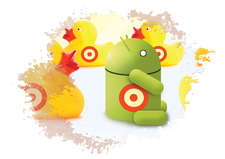Exploring the Flask web framework in Python
Hip Flask

The Flask micro framework emerged from an April Fool's prank, but this simple and easy web development aid is no joke.
Developers who are looking for a Python web framework often turn to the popular Django framework [1], but Django isn't the best choice for every situation. For instance, developers occasionally face tasks that are very difficult to solve with Django's object relational mapper (ORM) or that require additional applications or other frameworks. In some cases, the versatility of Django leads to a complexity that simply isn't needed for a quick and simple project. When less is actually more, a micro web framework such as Flask [2] is often a better option.
This article demonstrates the Flask web framework by putting it to work on a real-world web application: a handy little brainstorming tool known as Geistesblitze. The word Geistesblitze is German for brainstorms or flashes of genius. The tool consists of a web application with graphical Web UI for quickly capturing and associating ideas. This simple example will introduce you to the most important and interesting aspects of Flask. The complete code is available under a BSD license on GitHub [3].
April Fool!
In 2010, the Denied [4] micro web framework popped up on the web for the first time. Python developer Armin Ronacher published it as April Fool's day joke; he wanted to poke fun at the business model of various micro web frameworks that were popular at the time. He bundled all the code into a single file called deny.py and posted a badly programmed web page (Figure 1) with fake quotes. He also shot a movie with a Dutch friend posing as the French developer of Denied [5].
[...]
Buy this article as PDF
(incl. VAT)
